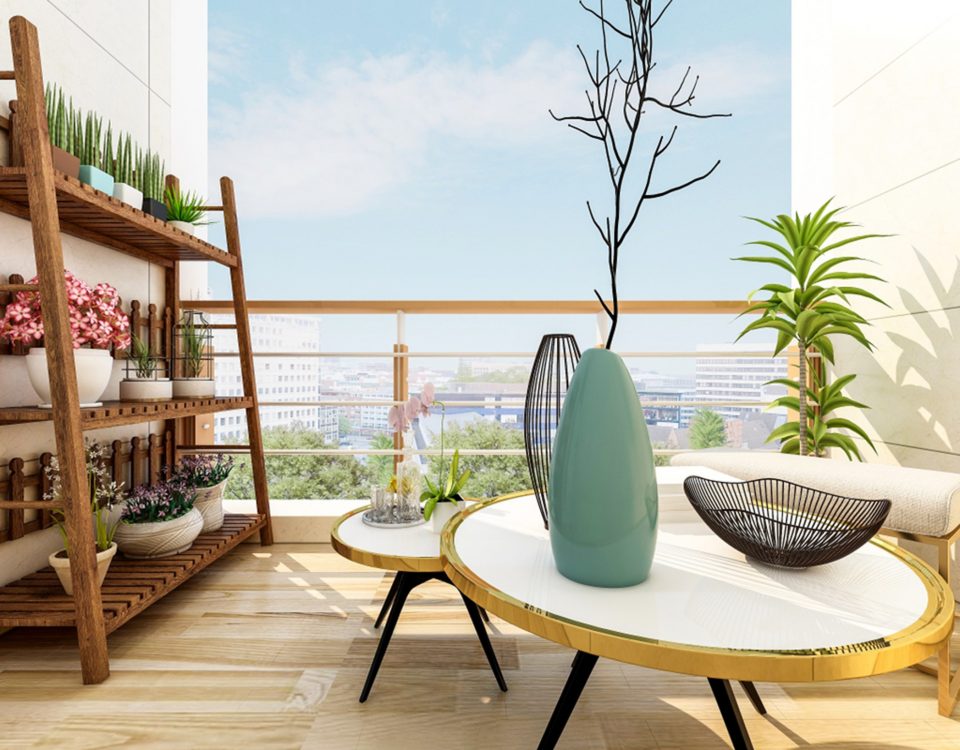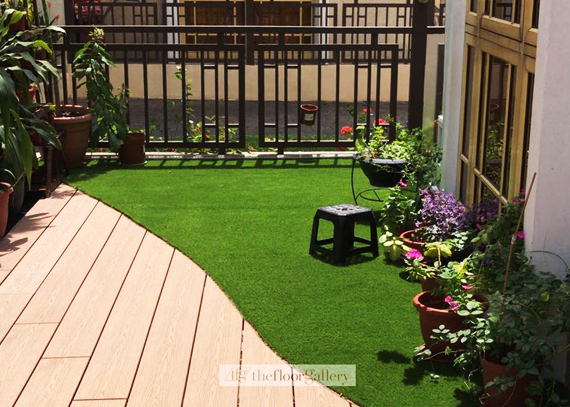5 Materials of a Perfect Modern Deck

Not to wax overly philosophical, but abundant choice is the essence of building as it is of life. Mankind has come a long way since the primitive days when building material variations were restricted to tinkering with the respective proportions of mud, sticks and stones that held a project together. These days, let’s face it: the choices come as much down to aesthetics as durability, cost, or any other consideration.
That doesn’t mean all decking materials are created equally. Options have exploded within the last few decades, far beyond just several varieties of wood. The advent of plastic decking, high-quality imported hardwoods and less-expensive composite lumber especially has forced sometimes-serious thought into just what exactly makes the “right” decking material stand out.
To be fair, each could form the skeleton of a perfect deck. But which is right for YOUR deck? That’s the question we’re here to help you answer, based on each of these top materials’ standout merits.
- Aluminum – Yes, Really
Aluminum decks are exceptionally rare. Not top-hat-wearing-unicorn rare, but close enough to it. There’s actually a good reason for that: at about $9 per linear foot for a 1’ x 6” plank, there’s no pricier material out there short of some imported woods. Just take a moment to consider the possibilities, though.
As natural wear-and-tear goes, a powder-coated aluminum decking finish will resist peeling and blistering with a practically permanent stiff upper lip. LockDry, AridDeck and Versadeck are just a few of the weather-, mold- and slip-resistant aluminum decking brands that absolutely defy cracking, checking, warping, rot, rust and splintering that eventually plague all other materials. Forget a plague of wood-boring bugs, too.
Aluminum decking is even virtually fire-proof and extreme cold won’t make this cryogenically strong, 100% recyclable stuff brittle. All this, and it just happens to be two to three times stronger than composite, plastic or real-wood lumber while being three to four times lighter and easily cut with anything you would use to cut wood.
Expect a gapless and watertight structure, thanks both to the interlocking edges refined into most aluminum decking and self-draining channels that collect and redirect rainwater, all built right into the material itself. As a bonus, few types of decking stay cooler in the sun, thanks to the metal’s natural tendency to dissipate heat.
- Imported Tropical Hardwoods
The next most-expensive material comes with a few more drawbacks aluminum decking generally doesn’t present – again, first and foremost being, imported tropical hardwoods make for high-quality decking at quite a cost in some parts of the United States. In most areas parts of the country, tropical hardwoods are priced on par with cedar and redwood decking. The most commonly chosen and widely sold imported decking, a gorgeous rich-crimson hardwood called ipe that compares in appearance to mahogany and is also known as Pau Lope or ironwood, sells for around $3.50 per linear foot for a 1’ x 6” plank.
Massaranduba, cumaru, red tauari, tigerwood and Philippine mahogany are often harder to find and more expensive than ipe, but despite their stubbornness to accept stains and their prized density and durability making them notoriously heavy and tough to cut and drill, there’s no tougher deck for the elements, insects and daily wear and tear to bust than one made of these rich-grained exotics.
If you must stain, say, an ipe deck, allow one to three months before finishing so the wood can weather and excess oils that will fight the finish can naturally leach out. To protect against checking, give both ends of the board an application of finish when they’re ready. Stick with specifically formulated oil-based penetrating stains made for hardwood decking, but if you should choose not to stain, at least do your deck the kindness of a UV-blocking clear wood preservative about once every three or four years. Be aware, tropical hardwoods are much like redwood or cedar in that unstained planks weather to a soft, silvery color and the fading you’ll see is a matter of how exposed your deck is to rain, snow and the sun year-round.
- Composite Decking
At the opposite cost extreme, there are composite (such as Trex, Timber Tech, CorrectDeck, Veranda and others) and plastic lumbers, respectively made from wood fibers blended with recycled plastics or 100% recycled and/or virgin plastics with no wood whatsoever. The former is immensely weather- and stain-resistant decking that refuses to warp, rot, split or splinter, whereas the latter also holds up against staining and decay while remaining entirely free from knots, splinters and cracks for life.
These man-made materials aren’t exactly maintenance free. Despite never needing sanding, refinishing or staining, shady and damp areas can be petri dishes for mold and mildew. Also, be advised that the wood in composites is not immune from decay.
These are easily the fastest-growing sources of decking materials on the market today with prices that vary from one company to the next, but with composites being still considerably less expensive – about $2.50 per linear foot compared to paying $0.50 more per linear foot for plastics. Most manufacturers also offer massive lines of well-suited handrails, balusters, fascias and more trims.
- Pressure-Treated Lumber And Domestic Softwoods
This has become the quintessential economical go-to in decking: readily available across the country, highly affordable at around $1 per linear foot, and ridiculously easy to cut and fasten, this green-tinted decking is most often southern yellow pine chemically infused to defend against fungus, wood-boring bugs and rot without end.
Unfortunately, its chemical fortification is considered by many to work against it. Pressure-treated lumber was routinely infused for over 60 years with a suspected carcinogen, chromated copper arsenate (CCA). However, its carcinogenic properties have never been conclusively proven and CCA was last used to treat residential lumber in December 2003. It has since been replaced with with less toxic and safer alkaline copper quaternary (ACQ) or copper azole substitutes and, in a limited set of products, a more recently developed nonmetallic preservative with a carbon base.
All of those considerations aside, pressure-treated lumber’s habit of cracking, splitting and warping more frequently than many other materials often calls for yearly power-washing, a stain or wood preservative application every two to three years, and a great deal more regular maintenance to ensure a long life and handsome look.
The longstanding favorite of decking purists, however, will always be redwood and red cedar, America’s two favorite western softwoods famed and prized for rich beauty and naturally rot, decay and insect-resistant oils and tannins. Both choices’ boards contain large amounts of hard, decay-resistant heartwood grown closer to the tree’s center, as opposed to the softer, more decay-prone sapwood that grows nearer to the bark.
Again, a major downside comes back to cost. Either will triple the cost of the same volume of pressure-treated lumber nearly anywhere in the country except the West Coast, where both are much more common. Plan on a yearly power-washing and adding a new coat of finish to either every three to four years or so and choose a clear, water-repellent wood preservative to seal out the weather and minimize checking. You’ll also need a good stain to maintain the natural richness of their colors, or submit to their eventual weathering to a softer gray if you choose to go au natural.




